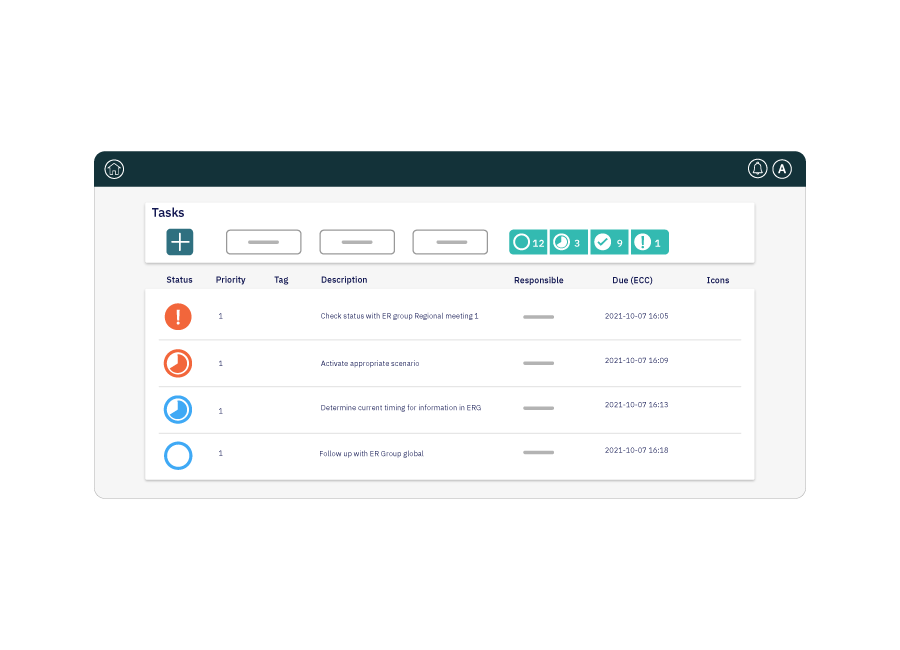Business Continuity Management
What is Business Continuity Management?
Business continuity management is the process of developing a plan to ensure that your business can continue to operate in the event of an unexpected disruption.
Business continuity is the strategy and plan that an organization puts in place to ensure that its critical functions can continue to operate in the event of an interruption.
This could include anything from a natural disaster to a power outage to an IT systems failure. While it may seem like something that only large businesses need to worry about, the truth is that any business can be affected by an unexpected disruption.
Developing a business continuity plan is important for any business, large or small. By taking the time to assess risks and develop mitigation strategies, you can protect your business from the potentially devastating effects of an unexpected disruption.

How to Develop a Business Continuity Plan
There are several ways that a company can take to develop a business continuity plan. Here’s a general set of steps that organizations can follow to ensure continuity in the face of a serious interruption.
Identify Critical Functions
In order to develop an effective business continuity plan, an organization needs to first identify its critical functions.
These are the functions that are absolutely essential to the operation of the business and cannot be interrupted without causing significant damage.
Once these functions have been identified, the organization can then begin to develop a plan for how they will be carried out in the event of an interruption.
Conduct a Risk Assessment
The second step in developing a business continuity plan is to conduct a risk assessment. This will help you identify which aspects of your business are most vulnerable in the event of a disruption.
Once you've identified the risks, you can start developing a plan to mitigate them. This may involve anything from investing in backup power generators to diversifying your supplier base to create multiple redundancies.
Develop a Communication Plan
It's also important to create a communication plan as part of your business continuity strategy. This will ensure that everyone in your organization knows what to do in the event of a disruptive event.
You should identify key personnel and establish procedures for how they will communicate with each other and with customers or clients.
Depending on the size of the company, it might also be a viable idea to have a plan for communicating with the media, if need be.
The Key Pillars of Business Continuity Planning
Here are the key pillars of successful business continuity planning.
1. Prevention
This pillar focuses on taking steps to prevent disruptions from happening in the first place. This can include things like backing up data, having redundant systems in place, and implementing security measures.
Many companies take prevention seriously, often creating multiple backups of core operational data, and never storing it in one place.
2. Detection
Even with the best prevention measures in place, disruptions can still occur. That's where detection comes in. This pillar focuses on quickly identifying when a disruption has occurred so that steps can be taken to mitigate its impact.
With advanced technologies such as AI and the Internet of Things, it has become significantly easier for organizations to detect major disruptions early and take steps to mitigate the damage.
3. Response
This is the pillar that outlines what needs to be done in the event of a disruption. It includes things like activating the backup systems, notifying employees and customers, and implementing contingency plans.
The Importance of Testing Your Business Continuity Plan
Once you've developed your business continuity plan, it's important to put it to the test. The best way to do this is through simulations or table top exercises.
This will help you identify any weaknesses in your plan and make necessary changes before an actual disruptive event occurs. Testing your plan on a regular basis will help ensure that it remains up-to-date and effective.
Preparing for serious circumstances is an ongoing practice. Companies must identify new threats that can affect continuity, and then prepare contingency plans accordingly and test them.
Use EcoOnline to Identify and Monitor Threats in the Workplace
EcoOnline’s Health & Safety Platform makes it easy for businesses to track safety events, record observations, and report incidents. It also allows businesses to assess risks in the workplace, allowing them to take a streamlined approach to identifying and mitigating risks.
EcoOnline is a cloud-based solution that companies can use to track threats or any major events that could potentially affect the continuity of the company. By creating safety plans to mitigate these risks, the company can prevent major interruptions.